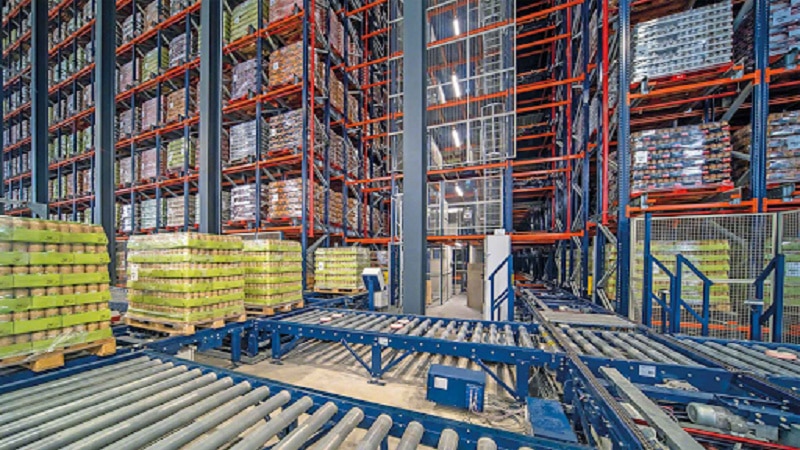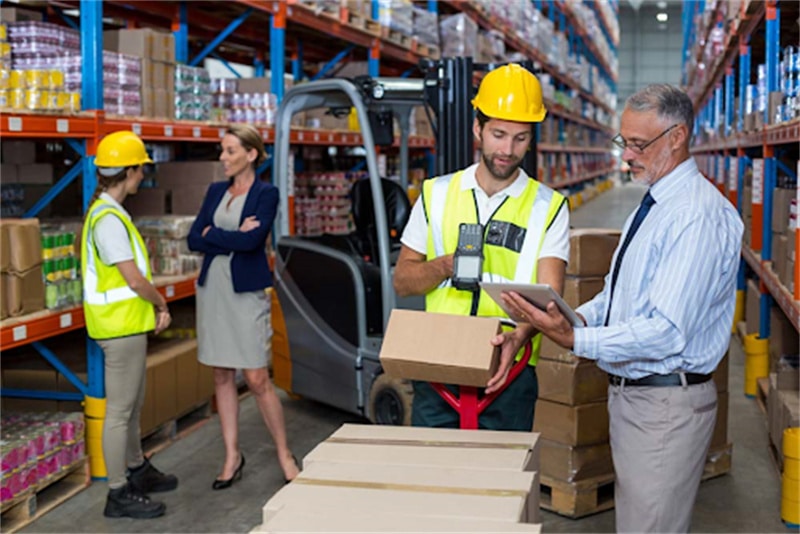
Integrating new technologies in the warehouse used to be a privilege for big companies.
These days, even small businesses can try to be innovative. For example, warehousing has become subject to automation, which can transform the supply chain, encourage asset utilization, and increase productivity. Warehouse automation solutions don’t mean stealing jobs from human workers. Instead, they can optimize the working process by making it easier for people.
What Is Warehouse Automation?

The process of warehouse automation means the atomization of inventory routine into, within, and out of warehouses with minimal human involvement. It allows businesses to eliminate labor-intensive tasks that require repetitive physical work and manual data management.
A warehouse worker is not going to lose his job. But he will be assisted by an autonomous mobile robot when it comes to extremely heavy packages. The robot can move the inventory from one place to another in a short time. If it is a repetitive task, a robot will do it again and again automatically.
What Is Automation Warehouse System?
The process of automation warehouse system aims to improve the working routine by minimizing physical activities. It demonstrates better performance, high-level productivity, and absolute safety. Moreover, it suits perfects both small and large companies. The main point is the presence of specific equipment:
- Automated storage (AS) and retrieval system (RS) are known as computer-based systems that automatically place and retrieve loads from certain storage locations.
- Smart shelving and pallet technology are meant for monitoring inventory in warehouses.
- An automated guided vehicle (AGV) is a pre-programmed machine that moves goods within the warehouse and is managed by wires installed above or under the warehouse floor.
How Does Warehouse Automation Work?
Warehouse automation relies on software and technology like robotics and sensors to make working tasks automatized. It works perfectly well in the combination with existing tools like inventory management software.
Warehouse automation takes responsibility for the strategic business operations in your company by helping you address customer demand. It involves a warehouse management system (WMS) that makes manual processes and data analysis happen automatically. Integrated with other business solutions, warehouse automation can demonstrate the best possible result when managing and automating tasks across existing business and supply chain functions.
When to Automate Your Warehouse
Now that you are ready to proceed with warehouse automation, you should consider some nuances. You’ll need to analyze your business processes and procedures, explore your supply chain, conduct in-house expertise, and find possible gaps in current and future technologic trends.
To automate your warehouse, you have some questions to be answered first. Here are some of them:
- Are your customer orders delayed due to an insufficient workforce?
- Does your order processing capacity get lower?
- Does your inventory demonstrate a high level of inaccuracy?
- Do your current warehouse processes and procedures enable a large workload?
- Does customer satisfaction data demonstrate issues in the supply chain?
- Do you have to change your workforce to deal with the fast-changing demand?
3 Steps to Automate Your Warehouse
If you make up your mind to automate your warehouse, you can’t rely on your intuition only. You should have a clear understanding of what you put yourself into. This includes positive and negative aspects.
Benefits of Warehouse Automation
Multiple warehouse automation benefits make companies integrate smart technologies into their logistics routine. When the first level of the supply chain is optimized, the performance of all the next stages also gets higher. But there are some more benefits to consider:
- Efficient food and equipment testing. When the inventory gets to the warehouse, it needs to be carefully examined for damage and wastage. If it is done automatically, the process is going to be fast and accurate.
- Higher productivity. Automated warehouse is giving warehouse administrators an opportunity to reach real-time data at every stage of production. This becomes possible thanks to linked sensors, machine-to-machine communication protocols, and other innovations.
- Higher visibility and transparency. Massive warehouses can have full control over the inventory, from the moment of receiving to shipping. Quality issues can be identified straight away, which minimizes the risk of delivering a defective product.
- Employee safety. Automation enhance the level of safety for employees and the whole working process. Autonomous mobile robots, automated conveyor mechanisms, and palletizers can perform time-consuming and dangerous tasks without putting employees at serious risk.
Challenges of Warehouse Automation
Although the benefits of warehouse automation speak for themselves, they don’t eliminate the possible issues. Thus, warehouse automation isn’t the most affordable business solution. It requires a considerably large capital to get up, run, and succeed in your business initiatives. The equipment doesn’t last long due to intensive utilization. This leads to downtime and repair/maintenance costs.
To eliminate or minimize maintenance issues, you will need maintenance plans. Third-party agencies like Modula can help you with this task easily. Their maintenance and repair experts ensure the new systems and equipment work properly. The high expenses associated with equipment and setup usually pay for themselves in a matter of time. What you should do is it to make your business prepared for some challenges with proper risk assessment and planning.
Warehouse Automation Best Practices

The average warehouse automation system covers a wide range of practices. Some of them include:
- Integrate with a WMS. Make sure the integrated warehouse automation mechanism is based on a WMS platform. In this case, it will be able to manage inventory controls, track inventory, report on labor expenses, integrate dashboards, etc.
- Create data collection: When you decide to automate data collection, you should consider some cloud-based solutions that would help you store and transfer data when needed. The mechanism will help you minimize human error.
- Perform repetitive cycle counts: Cycle counts keep track of inventory levels against the inventory data record, which is the main aspect of WMS. Automated data collection systems allow you to automate cycle counts with a mobile barcode.
Conclusion
Choosing the proper warehouse automation system offers many benefits to keep your workflow as smooth as possible. Warehouse automation minimizes potential errors, decreases operation costs, enhances warehouse productivity, optimizes space, lowers processing time, and strengthens customer satisfaction. No wonder automated warehouse systems can take your business to a totally new level in a short time.










